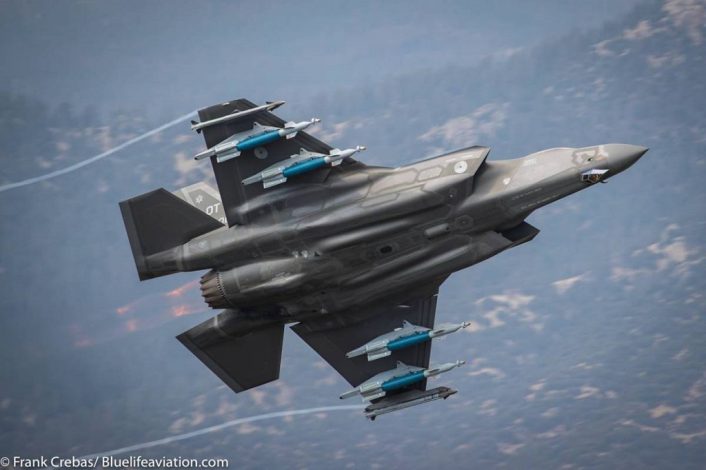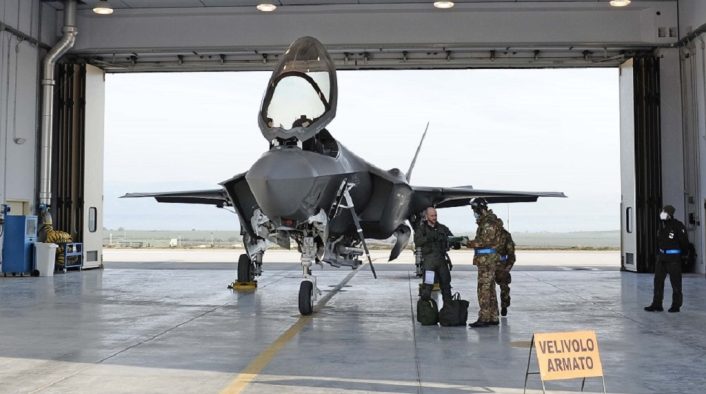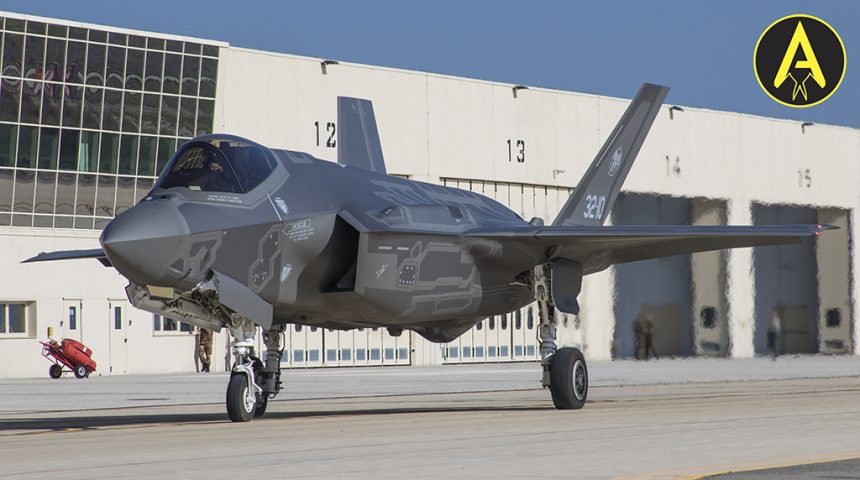The missiles will fill a capability gap caused by the IRIS-T not being integrated with the F-35.
The Naval Air Systems Command’s (NAVAIR) Air-to-Air Missiles Program Office (PMA-259) just announced that Italy became the 28th Air Intercept Missile (AIM)-9X International Partner on Dec. 17, 2021. The new air-to-air missile will equip the F-35 Lightning II fighter jets of both the Italian Air Force and Italian Navy, which until now had to count on the AIM-120C AMRAAM as their only air-to-air missile.
The Italian Embassy in Washington D.C. notified the Navy International Programs Office that the Italian Air Force accepted and signed the Letter of Offer & Acceptance (LOA) which was provided by the United States Government earlier last year. As mentioned in the press release, the letter was signed on November 19 and shortly after representatives from PMA-259 and Raytheon presented the AIM-9X Block II/II+ Classified Capabilities Briefing to Italian Headquarters Air Force Staff and F-35 Lightning II pilots.
NAVAIR did not provide info about the number of weapons and the economic amount of the deal, other than mentioning that the LOA consists of “a modest quantity” of AIM-9X Block II/II+ missiles to complement the Italian Air Force F-35 fleet. The missiles acquired by Italy will be part of the U. S. Navy’s Lot 23 Production Contract which will be awarded in 2023, with the delivery of the missiles scheduled for 2026.
The Italian Navy has been provided with a separate LOA for the AIM-9X that will equip its F-35Bs and is expected to accept it soon. As the ones for the Air Force, the missiles will be in the Block II/II+ variant part of Lot 23. While not specified, it is safe to assume that the delivery of the Navy’s missiles will be in 2026 too.
The AIM-9X Sidewinder is the latest of the Sidewinder family of short-range air-to-air missiles, featuring a high off-boresight focal-plane array seeker mounted on a highly maneuverable airframe with a greatly improved infrared counter-countermeasures. The AIM-9X incorporates many AIM-9LM legacy components (rocket motor, warhead and active optical target detector), but with performance far exceeding the legacy Sidewinder.
The AIM-9X Block II, which is part of this deal, is considered the most advanced short range air-air missile in the U.S. inventory, capable of using its datalink, thrust vectoring maneuverability, and advanced imaging infrared seeker to hit targets even behind the launching fighter thanks to the Lock-On-After-Launch capability. Unlike previous AIM-9 models, the AIM-9X Block II/II+ can even be used against targets on the ground.

Italy already operates two types of short-range air-to-air missiles: the AIM-9L (for Tornado, AMX and AV-8B+) and the IRIS-T (for the Eurofighter Typhoon). However neither of those could be used with the 5th gen aircraft. This left the Italian F-35s with only one air-to-air weapon, the AIM-120, available for the Quick Reaction Alert (QRA) duty. As a sidenote, the Italian F-35s covered this role as part of the National Air Defense since 2018, shortly after becoming the first in Europe to declare the Initial Operational Capability (IOC).
Since 2019, the F-35s have also been involved in multiple NATO Air Policing missions, the last of which was the Enhanced Air Policing at Ämari Air Base in Estonia last summer. From Jan. 27, 2022 the ItAF is contributing to the NATO QRA with its Lightning II jets. Much like the Eurofighters, the F-35 in QRA will be under the control of the NATO Combined Air Operations Centre (CAOC) which, if needed, can launch a scramble to intercept and identify any suspect aircraft.

Back to the AIM-9X, the signing of the LOA will allow Italy to equip its aircraft with both the AIM-120 in the internal weapon bays and the AIM-9X under the wingtips’ rails, like other international F-35 users. Italy is not the only user who had to resort to this solution, with a very similar situation happening also to Norway some years ago. Norway, like Italy, used the IRIS-T on its recently retired F-16s, however in 2015 a deal to acquire the AIM-9X was signed as the European missile was not available for the F-35.
The IRIS-T was initially scheduled for integration on the F-35, with Norway sponsoring an initial study preparatory for the works, but for unknown reason the integration did not go ahead. A future integration might still be on the table however, as Greece is another IRIS-T user that will receive F-35s. Moreover, Germany and Spain, two other IRIS-T users, are still reportedly interested in the acquisition of the F-35, taking the total to five nations possibly interested in the continuation of the integration of the IRIS-T on the 5th gen. aircraft.








